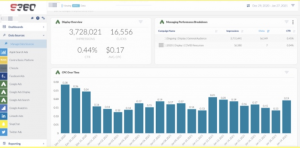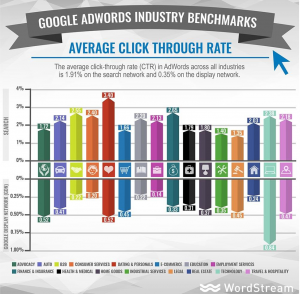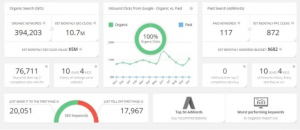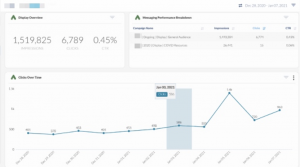Those of us who spend our days entrenched in the world of digital advocacy know one thing for sure: The only constant is change. Online technology and trends evolve quickly — if you don’t take the time to regularly assess your performance and optimize accordingly, you’re virtually guaranteed to get left behind.
This is why benchmarks are crucial. After you’ve established your key metrics for your digital advocacy campaign and a reliable reporting framework to track them, you’ll need benchmarks to understand what your data says about the performance of your campaign in the context of your organization, your industry, and your audience.
To help you understand how to use benchmarks in the content of digital advocacy, this article will:
- Introduce you to benchmarking for digital advocacy
- Walk you through the three main types of benchmarks
- Provide examples of how these benchmarks are used
By the end of this article, you’ll know what benchmarks are and why they’re an important tool to guide your digital marketing and advocacy efforts. Let’s start with the basics.
What Is Benchmarking?
Benchmarking is the process of comparing a process, campaign, or initiative against your peers, your competitors, and yourself. Benchmarks help you put your campaign performance data into the context of what “success” looks like for your industry, your market, or your target audience.
The benchmarks you use to analyze the success of your campaign are based on your campaign goals , which can be quantitative or qualitative. For instance, a quantitative metric for digital advocacy might be an email open rate or social media reach percentage. A qualitative metric, on the other hand, is more subjective and may include things like the positivity of social media commenting. .
Benchmarks are a crucial tool for guiding your digital advocacy efforts because they help you:
- Optimize your digital marketing spend
- Analyze the ongoing performance of campaign elements
- Prioritize digital activities based on their performance
- Identify gaps and opportunities in your digital strategy
Types of Benchmarks
The more specific your benchmarks are to your industry, audience or market, the better prepared you are to effectively analyze how well your efforts are translating to success (no matter how you define it). To choose the right benchmarks for campaign analysis, however, you’ll need to consider what type of benchmarks make the most sense for you.
Depending on what you want to achieve, certain types of benchmarks will be more valuable for defining and optimizing your strategy than others. There are three main types of benchmarks for measuring digital advocacy success.
Internal Benchmarks
Internal benchmarks are based on historical data from your own organization’s campaigns, projects, and initiatives. Internal benchmarks are important because they help you understand where your organization is now; how that’s changed over time; and what this suggests about the future.
Internal benchmarks give you a baseline to determine what success looks like for you as opposed to what’s happening for your competitors and peers. For campaign managers, internal benchmarks can provide crucial insights into how incremental improvements to your campaign strategy impact audience response.
For example, Strategies 360 documents a number of key metrics across the hundreds of campaigns we manage every year. Important benchmarks that are documented internally include a breakdown by client and industry of average click-through or view-through rates (depending on the creative), percentage of audience reached, frequency of messaging, cost per thousand impression (CPM) and cost per click (CPC).
If you’re new to digital marketing, you may not have much in the way of historical data from which to draw insights. If this is the case for you, consider looking to other departments or units in your organization for sources of internal data based on your KPIs.
Competitive Benchmarks
Competitive benchmarking is the process of comparing your own organization’s data against a set of competitors using a specific set of metrics. This is a crucial element of campaign benchmarking because it allows you to more easily spot where a competitor is doing well or starting to struggle — which can highlight opportunities for your own campaign.
Competitive benchmarks can be used to establish where you are performing within your industry, and how that compares to your competitors’ performance in the same areas.
Establishing competitive benchmarks usually require in-depth research into what your competitors are doing and how well it’s working. This can be a time-consuming and tedious process. For this reason, it’s important to focus only on a few key metrics so you have a more narrow focus for comparison and analysis. The example above, for instance, focuses on audience growth as a key metric for comparison.
Industry Benchmarks
In addition to using your competitors’ data to analyze performance, you can also use industry benchmarks to understand how averages within your vertical compare against your own data. Industry benchmarks are generally made up of averages across a large subset of organizations collected and analyzed on a regular cadence.
Visualizations like this industry benchmark breakdown for Google Ads give marketers a good understanding of how widely benchmarks fluctuate based on industry – which highlights the importance of specificity in benchmarking. Source: Wordstream
Industry benchmarks are a great tool for campaign planning because they help you understand the context and preferences of your industry and the impact this will have on your campaign performance. Unlike competitive benchmarks, industry benchmarks give you a more holistic understanding of your target audience and the context in which they operate.
Industry benchmarks are readily available for marketers and campaign managers, which makes them a popular source of insights for high-level strategic planning. There are plenty of great sources for industry benchmarks, which can be utilized on their own or in conjunction with internal and competitor data.
How Benchmarks Are Used
Benchmarks can be used in a number of ways within an organization or team. For campaign managers, benchmarks are generally used to analyze the performance of digital marketing or social media tactics — but they can also be a helpful tool for creating and optimizing processes and informing campaign strategy.
Process Benchmarking & Analysis
Process benchmarking involves taking a closer look at how different teams, units or organizations approach a particular process, and then using these insights to optimize and improve your own processes.
Strategic Benchmarking & Analysis
Strategic benchmarking is the process of comparing organizational models or approaches to determine the best way forward for your own strategy. This is a great tool for spotting opportunities and prioritizing your digital tactics based on where your peers and competitors are investing (or not investing).
Performance Benchmarking & Optimization
Performance benchmarking establishes how your campaign is performing based on specific outcomes. In the case of most digital advocacy campaigns, this usually involves comparing performance metrics across various channels like social media, paid search and display ads. Performance benchmarking is crucial for optimizing digital advocacy campaigns so they can beat out your competitors in terms of visibility, engagement, and action.
Strategies 360 uses tools like SpyFu to gain insight into how others in your industry are performing, and compare this against your own performance. Dashboards like this one provide a quick overview of what’s working, what’s not, and what needs optimization.
Data used to facilitate digital advocacy performance benchmarking generally rely on insights drawn from a combination of multiple digital marketing research tools like SEMRush, Ahrefs and SpyFu. For this reason, digital performance benchmarking, analysis and optimization is often an area where campaign managers choose to work with a digital advocacy partner like Strategies 360.
How We Use Benchmarks
Because we work with around 200 clients a year and manage close to 5 million per year in media spend, our team at Strategies 360 has a huge advantage in being able to compare our data across a large subset of clients. We combine our internal data with robust external datasets from major networks to continuously optimize campaigns for what’s most impactful in different digital spaces at any given time.
Working against a set of benchmarks is key in maximizing digital spend as it allows us to quickly identify whether a campaign is over or under performing in order to optimize and adjust as needed. Here’s two examples of what that looks like in practice:
Optimizing Ad Messaging
Working on an initiative to pass a bond to better fund a local fire department, we identified one message in particular that was performing below our benchmark average on Google Search. After crafting an additional ad based on our higher performing ad and pausing our lower performing ad, we saw clicks increase by 28% over the second half of the campaign.
This led to a better user experience, higher engagement rates (click through or view through rates) and a lower cost per click (CPC) all because we were able to quickly understand what was working and what wasn’t due to benchmarking.
Search Term Optimization
On another ballot initiative focused around allowing legalized marijuana sales, we saw dramatic improvements by pausing search terms that were performing below benchmark. After making these shifts due to our benchmark tracking, we increased overall campaign click-through rates by 25% while also decreasing our average cost-per-click by almost $1/click.
Achieve Benchmarking Success with Strategies 360
Ultimately, the best approach to setting benchmarks is a combination of internal and external sources — but few campaign teams have all of the resources they need to accurately set and track changes to industry and competitive benchmarks to guide their decisions. This is where working with a digital partner like Strategies 360 can help.
Contact our team to talk about how we can help you develop and optimize a digital advocacy strategy using our best-in-class digital advocacy benchmarks.






